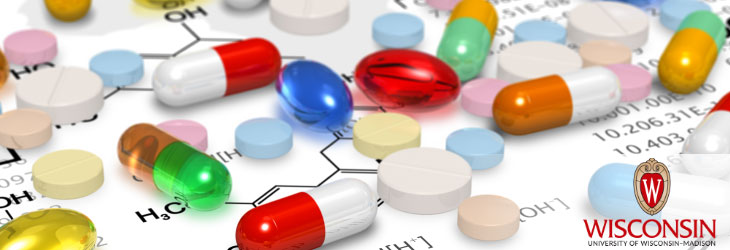Therapeutics & Vaccines

A Novel Series of Antimicrobials Target Bacteria Membranes to Overcome Antibiotic Resistance
WARF: P120204US02
Inventors: Douglas Weibel, Ye Jin Eun, Marie Foss, Katherine Hurley
The Wisconsin Alumni Research Foundation (WARF) is seeking commercial partners interested in developing a class of antimicrobial compounds that specifically target the membranes both of Gram-positive and Gram-negative bacteria.
Overview
Drug resistant pathogens continue to emerge as the rate of the development of new antimicrobials to combat them continues to decline. Alarmingly, slow-growing bacteria associated with dangerous and prolonged infections are able to survive many classes of clinical antibiotics. For example, β-lactam antibiotics kill rapidly growing cells, but are ineffectual against dormant bacteria. Treating infections with ineffective antibiotics can lead to long-term problems including bacterial drug resistance and relapse.
An effective strategy for combatting slow-growing bacteria is to target their lipid membranes. One-third of all proteins in bacteria are associated with membranes and disrupting this structure inhibits vital cell processes including respiration and energy transduction. The effectiveness of membrane-active drugs is well known. However, most have proven unsuccessful against Gram-negative bacteria, including bacteria of the genera Escherichia, Salmonella, Shigella, Pseudomonas, Helicobacter and Legionella.
An effective strategy for combatting slow-growing bacteria is to target their lipid membranes. One-third of all proteins in bacteria are associated with membranes and disrupting this structure inhibits vital cell processes including respiration and energy transduction. The effectiveness of membrane-active drugs is well known. However, most have proven unsuccessful against Gram-negative bacteria, including bacteria of the genera Escherichia, Salmonella, Shigella, Pseudomonas, Helicobacter and Legionella.
The Invention
UW–Madison researchers have developed a novel series of antimicrobial compounds that target the membranes of Gram-positive and Gram-negative bacteria, and are effective both against actively growing and stationary bacteria.
The series of compounds are analogs and derivatives of DCAP, or (2-((3-(3,6-dichloro-9H-carbazol-9-yl)-2-hydroxypropyl)amino)-2-(hydroxymethyl)propane-1,3-diol).
This series of compounds disrupts the bacterial cell envelope and causes cell death, and has only minor effects on eukaryotic cells. With this discovery, new antimicrobials based on DCAP analogs and derivatives could be used to combat resistant bacterial cells.
The series of compounds are analogs and derivatives of DCAP, or (2-((3-(3,6-dichloro-9H-carbazol-9-yl)-2-hydroxypropyl)amino)-2-(hydroxymethyl)propane-1,3-diol).
This series of compounds disrupts the bacterial cell envelope and causes cell death, and has only minor effects on eukaryotic cells. With this discovery, new antimicrobials based on DCAP analogs and derivatives could be used to combat resistant bacterial cells.
Applications
- Treating and preventing bacterial infections
- Inhibiting biofilms
- Cleaning bacterial contamination
Key Benefits
- Potential scaffold for new broad-spectrum antibiotics
- Combats both Gram-negative and Gram-positive bacteria
- Works against stationary and actively growing cells
- Minimal harm to host cells
Additional Information
Related Technologies
Publications
For current licensing status, please contact Rafael Diaz at [javascript protected email address] or 608-960-9847
- Eun Y.-J., Foss M.H., Kiekebusch D., Pauw D.A., Thanbichler M., Westler, W.M. and Weibel, D.B. 2012. DCAP: A Broad-Spectrum Antibiotic That Targets the Cytoplasmic Membrane of Bacteria. J. Am. Chem. Soc. 134, 11322-11325.